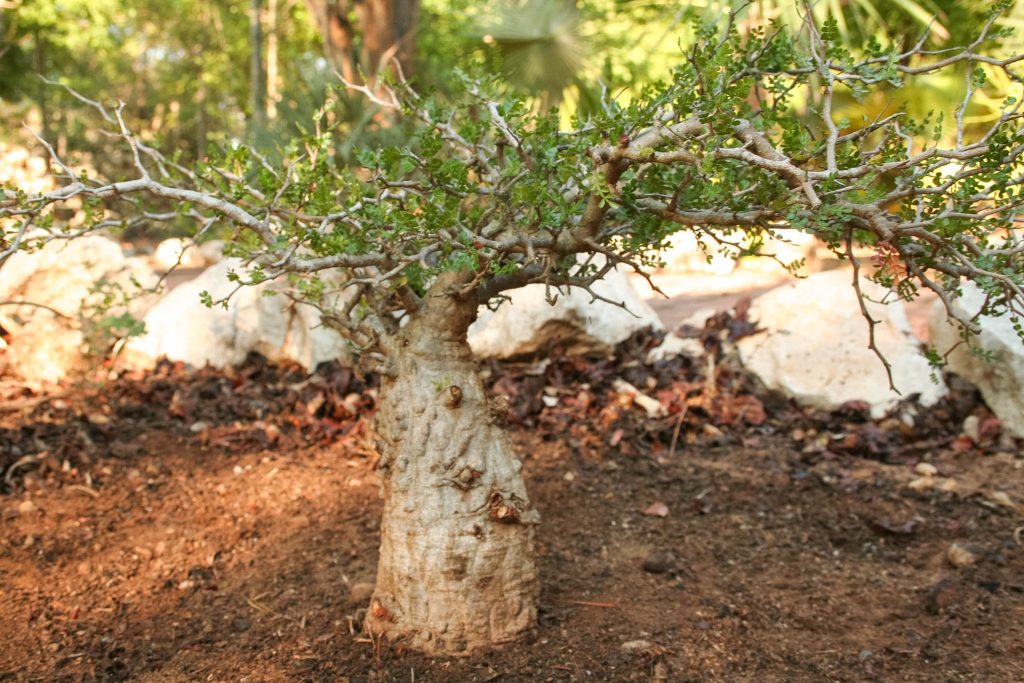Tuberous plants and trees in the Zazamalala forest

One of the methods that plants use to store water and Nutri cants to overcome the 7-9 months of drought in west Madagascar is growing a tuberous stem. It enables them to produce new leaves and flowers (or flowers first) in September, when light intensifies, 2-4 months before rain starts to poor. And this is necessary to have their seeds drop down in a wet soil. A good example is the baobab tree, with 3 Adansonia species in the western half of Madagascar. Others are Moringa drouhardi and M. hildebrandti, fast growing large trees with swollen trunks. And there is the genus Pachypodium with tree-like species with swollen spiny stems, and tuberous (elephant foot) spiny shrubs. Less known is the genus Operculcarica, with shrubs and trees with swollen trunks and tiny leaves. The trunk of one of them, O. decaryi, has a trunk used in the south as a coffin. Another is probably the perfect bonsai, O. pachypus, a miniature tree of hardly 50 cm with a stem up to 20 cm diameter and leaves of a few mm only.